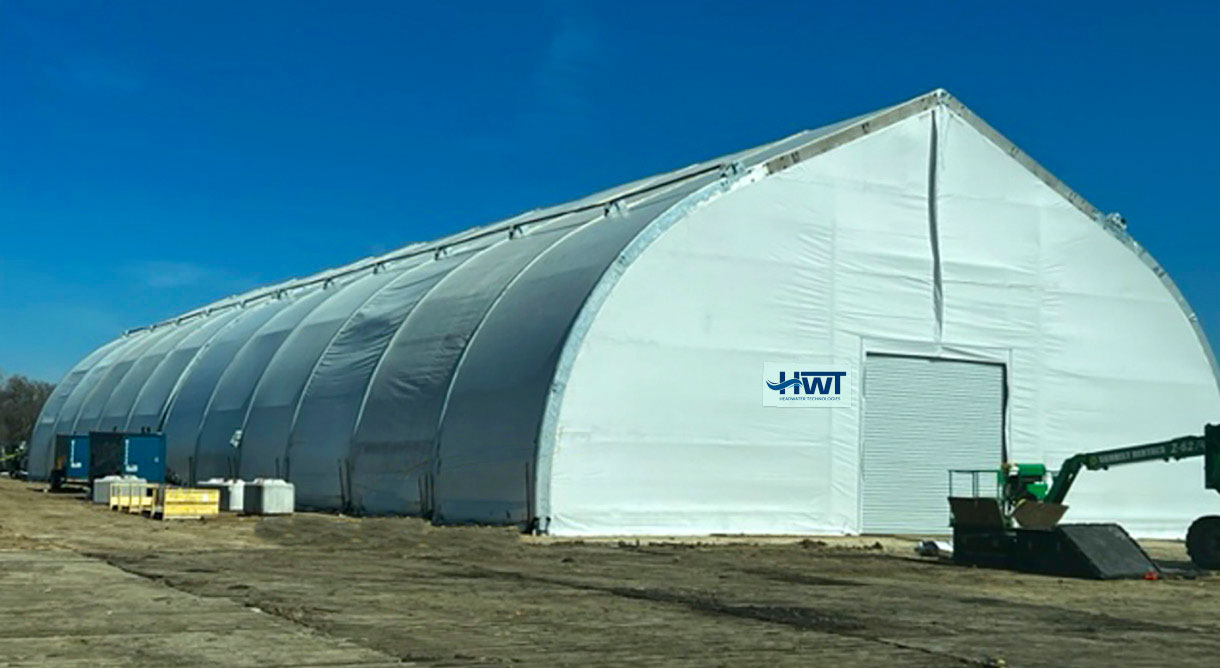In December of 2022, a progressive fatigue crack in TC Energy’s Keystone pipeline resulted in 14,000 barrels (nearly 600,000 gallons) of oil being spilled into Mill Creek in rural Washington County, Kansas, threatening aquatic life and farmland throughout the region. To orchestrate a solution, TC Energy along with Burns and MacDonnell contracted with Headwater Technologies to develop and implement a large-scale emergency environmental release response system. There were many challenges implementing this emergency response treatment system that needed to be overcome, including an aggressive schedule, remote location, and weather issues. The creek had to be redirected, and then progressively dewatered and treated through a treatment system designed to handle the contaminants imparted into the water by the spilled oil.


The project aimed to create a state-of-the-art water treatment system near the site of the spill, to remove aromatic compounds and oil from the water in an actively flowing creek. A multifaceted and collaborative approach was used to treat contaminants in the creek down to low PPB levels and to ensure equipment on the site was appropriately operated. Treatment system process steps included pre-treatment with dissolved air flotation (DAF), a lined settling pond built to fit the area, diesel-driven feed pumps, and specialized filtration media selected by HWT for this application loaded into pressure vessels.
Implementing this project over the winter presented challenges as well, but when inclement weather and other changes delayed construction, Headwater worked with partners to implement appropriate protection, including a 12,000-square-foot temporary structure, to protect the equipment and, more importantly, the operators during the winter months.
We completed procurement and mobilization for this project at an unprecedented pace. The treatment facility was completed and operational just six weeks after the project was kicked off. The system operated for approximately 16 weeks, adhered to stringent environmental standards, maintained optimal treatment flow rates as required by the site, and effectively treated and discharged over 54 million gallons of cleaned water back into the stream after treatment to below all of the regulated limits required.
Once we received directions to shut down operations, the system was decommissioned, and all materials were removed from the site in less than three weeks, including the temporary structure and all of the spent media.
Headwater Technologies’ work on this project exemplified our ability to design, build, and execute effective water treatment solutions in emergency response scenarios. We brought together a team that resolved the problem with quick problem-solving skills, and employed effective water treatment solutions. Ultimately, the effective collaboration and project management skills demonstrated by HWT resulted in the creation of a comprehensive water treatment system for the challenging water contained in the creek. The system, the fifth-largest water treatment plant in Kansas, successfully treated 54 million gallons of contaminated water with no safety incidents or contamination breakthrough events.
In addition to addressing significant challenges and setting a precedent in water treatment excellence, we gained invaluable insights for future projects in environmental conservation and management.